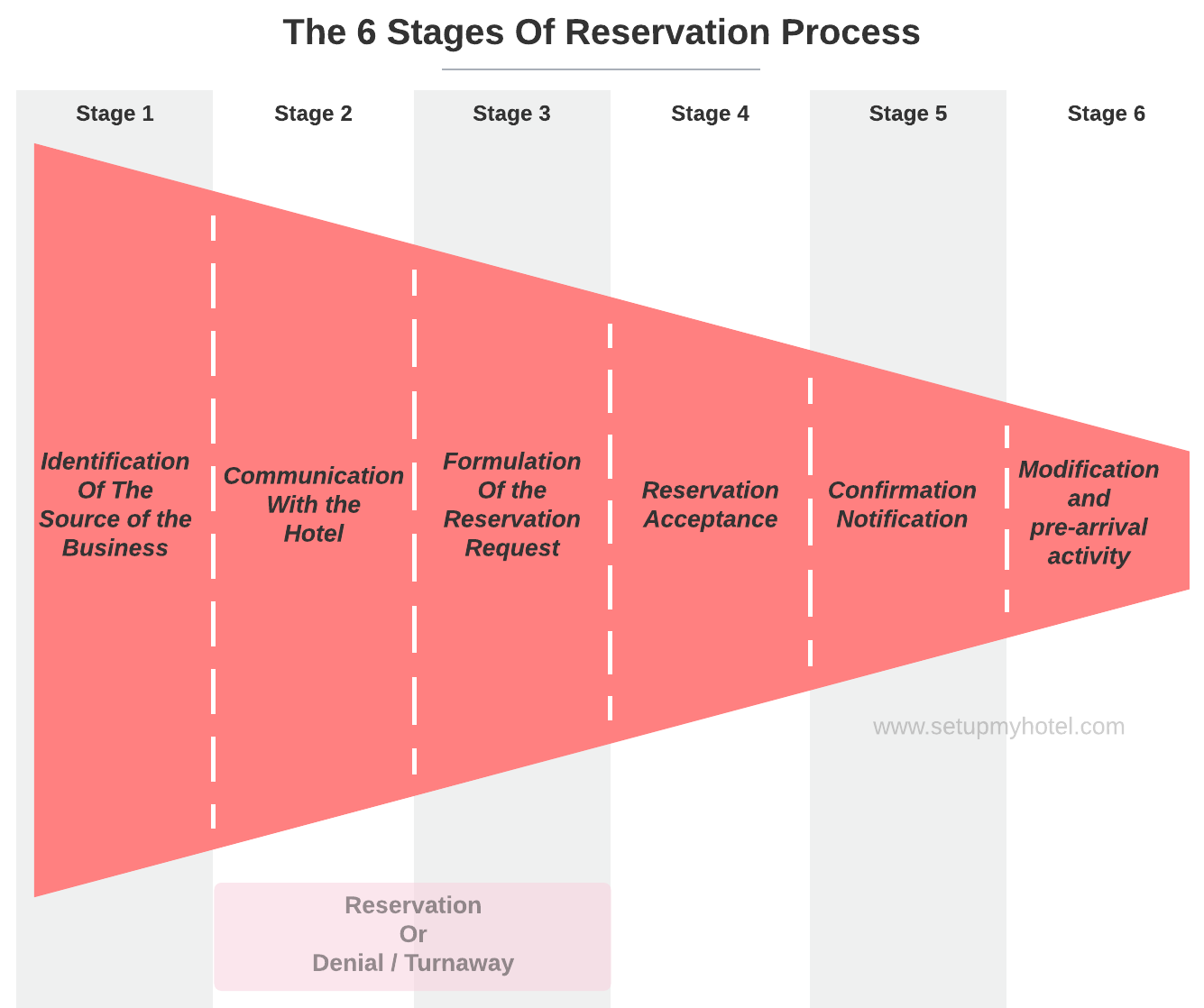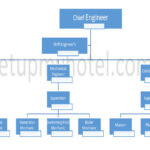6 Stages Of Reservation Process in Hotel Industry
The reservation process is an important aspect of hotel management. It involves a number of stages that are crucial for ensuring a smooth and hassle-free guest experience. The first stage is the initial inquiry, where the guest contacts the hotel to check availability of rooms and rates. This can be done through various means such as phone, email, or the hotel’s website.
Once the guest has confirmed their interest in making a reservation, the hotel will ask for details such as the dates of stay, number of guests, and room preferences. Based on this information, the hotel will then offer available options and rates to the guest.
The next stage is the actual reservation, where the guest confirms their booking by providing personal and payment information. This is usually done through a secure online booking system or over the phone with a reservation agent.
After the reservation is confirmed, the hotel will send a confirmation email or message to the guest, which will include important details such as the reservation dates, room type, rate, and cancellation policy.
The final stage is the check-in process, where the guest arrives at the hotel and is welcomed by the front desk staff. The guest will be asked to provide identification and payment, and will be given room keys and any necessary information about the hotel’s amenities and services.
Overall, a well-managed reservation process is essential for ensuring guest satisfaction and creating a positive reputation for the hotel.
1. Identification of the sources of business:
The hotel normally identifies two major sources of business: Free Independent Travellers (FITFIT means Free Independent Traveler or Free Independent Tourist. A FIT is an individual or family or...) and associated Travellers (Groups). The FIT component is simply a non-group affiliate seeking overnight accommodations. Regardless of whether a request is made by an individual, a family or a collection of friends, a request may still be termed as FIT reservation if it meets certain qualifications.
When meeting groups, convention groups, and the like are seeking guest room space in the hotel, these types of requests are referred to as group reservations. The groups are differentiated from the FIT reservations based on 1.) Whether a group coordinator is involved 2.) Whether the group will pick up some or all of its member’s charges 3.) Whether special room rates, services and/or room types apply.
Group reservations typically require that a block of rooms (allocation) be initially reserved for the group with a specific rooming list following at a later date. It should be noted that if a group does not have all of its blocked rooms booked by a reasonable date, most hotels will release the uncommitted rooms from the group’s block. FIT reservations, however usually allow for both blocking and booking to take place simultaneously. Regardless of its source of business, a reservation request begins the hotel’s reservation process read more about different source of reservation.
2. Communication with the HotelA Hotel or Inn may be defined as an establishment whose primary business is providing lodging facili...:
There are numerous ways a hotel can learn about the guest’s request for available space. The potential guest can connect with the hotel via a telephone, email, online, Social Media, other devices or referral systems may all become important, communication links between the sources of business and the hotel property.
It is important that the potential customer be aware of how to contact the hotel in order for lodging management to maximise guest room sales. A property receives reservation inquiries in a variety of ways. The reservation request may be made in person, over a telephone, in a mail, via facsimile or telex, though the internet or online, social media, mobile apps, instant messaging systems (Whatsapp, Telegram, Facebook MessengerMessenger: This personnel give services in sending various messages required by the Front Office Dep...) through a central reservation system, global distribution system or through an inter sell agency.
3. Formulation of the reservation request:
Once a hotel is contacted by a guest about reserving space its staff must intelligently formulate the reservation request and complete a reservation record. The reservation record is the permanent file form used to store all the information pertinent to a specific reservation or in current era creating a computerised reservation record in the hotel management software or PMS.
In formulating the reservation request, the three most important factors are a) the expected date of arrival and departure b) the desired room type c) the number of rooms needed. Using this information the hotel staff can search the room availability file via the designated arrival date. If the date is not closed the reservation agent proceeds by checking room type and the number of rooms available.
Along with this preliminary data, a reservation record will usually be judged complete when it includes the following information:
- Guest’s Profile Data.
- Guest’s group/company affiliation.
- ArrivalThe time that an. guest registers into the hotel. date and time and departure date.
- The number of nights.
- Number of PaxPersons or Guests.
- Room type requested.
- The number of rooms required.
- Type of bed.
- Rate quoted / Rate Code.
- Date reservation received
- Reservation StatusAn indicator of a room's long-term availability for assignment. Examples of reservation status are 6....
- Billing Instruction
- Pickup Details.
- Any other Details or special remarks.
- Source Code
- Market Code
4. ReservationThe department that receives; documents and processes reservation requests. Acceptance:
A reservation can either be accepted or denied or turned away based on the availability of rooms in the day(s) in question. An acceptance would lead the receptionist into the confirmation phase, while a denial or turn away could cause a series of other options to be exercised like for example recording the turn away reason etc..
5. Confirmation notification:
The acceptance of the reservation is followed by a notification confirming the blocking of a room or group of rooms. The reservation confirmation is sent to the booker or guest by email, fax, SMS, social media or online chat (Instant messenger).
The confirmation establishes :
- A check on the entered reservation request data and satisfaction of the reservation request.
- An agreement of room rates.
- An agreement of method of payment.
- A statement of the hotel’s cancellation procedure.
6. Modification and pre-arrival activity:
Once the reservation has been accepted and confirmed many changes to reservation record can occur prior to the guest’s arrival. Changes in the arrival or departure dates, number of rooms required, adding pickup details, reconfirmation, updating deposit status, number of pax and outright cancellations are examples of common pre-arrival activities. Any time a change in a reservation record is required, the reservation record must be pulled and updated according to the guest request to keep the reservation-related data up to date.
Also searching and retrieving the correct reservation record for any modification and cancellation request is crucial to an effective reservation process. Also. while processing the cancellation below details need to be updated on the reservation record for any future reference.
- Caller Name.
- Caller contact details.
- Reason for Cancellation1) To release or cancel the confirmed or tentative booking. 2) To decide or announce that (a planned....
- Cancellation reference number.
- Date of Cancellation (Recorded automatically by the hotel software or enter manually).
- User or Reservation Agent Name Who processed the cancellation (Recorded automatically by the hotel software or enter manually).











